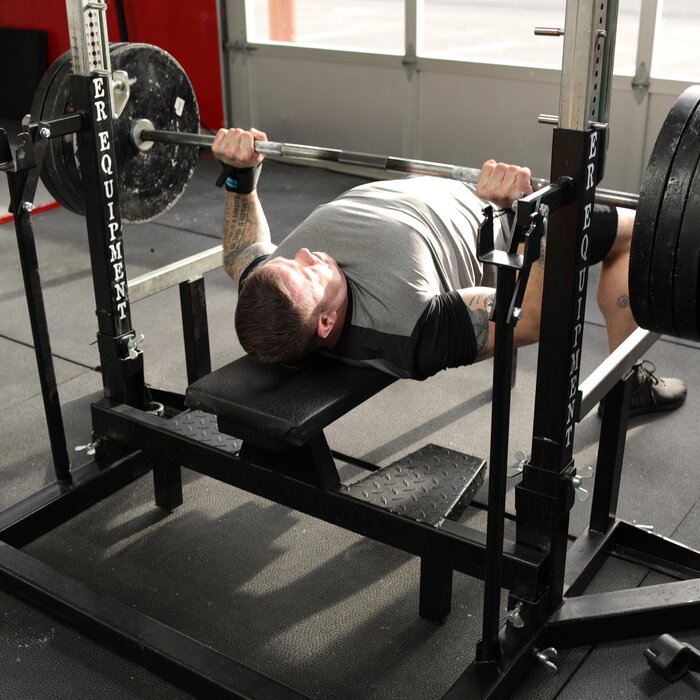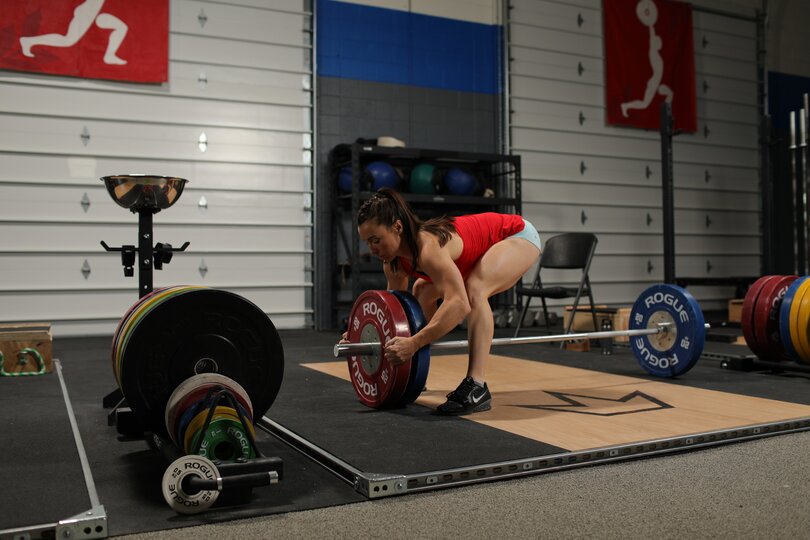For most lifters, finding a 1 rep maximum (1RM) on a given lift is a regular part of training. Whether you’re training for strength, size, or power, using percentages to calculate working intensities is probably part of your process when beginning a new program.
For anyone interested in seeing that 1RM weight tick up, or if you’re not sure where to start, I’ve got a few recommendations that could help.
Find an Accurate Training Max
Now, this may seem obvious or silly but finding an accurate training max is a good first step to setting up your program for success. Whether you’ve never completed a maximum strength-type program or your goals have recently changed, assessing where you are now can help you figure out where to go.
When calculating a training max, I prefer to perform a repetition max, like a 3RM or 5RM. I recommend using a weight that will keep the reps as low as possible because higher rep maxes like 10-12 tend to stray away from the demands of maximal strength that you are trying to assess. That said, planning to perform a specific number of reps can sometimes leave one or two in the tank, or lead you to take a big jump from one set to the next and leave a more accurate estimate undiscovered.

So, here’s what’s worked well for me: warm up, then start with a weight that you know will be challenging, but ultimately reasonable to use for five reps. Perform as many reps as you can with that weight. Let’s say you got seven. Add some weight, take two to five minutes of rest, and repeat: perform as many reps as you can with the new weight. Continue doing this until you find a weight that you can only lift three to five times. Viola, new repetition max.
Lastly, use that repetition max and the weight used for it in this calculator to determine your current estimated 1RM.
Push Your Capacity for Strength
Now, here’s where things will probably sound familiar: you have to lift heavy weights in order to get better at lifting heavy weights. In order to increase your 1RM, you must train close to it.
I have found success with performing sets of rep maxes, or near rep maxes, over and over again for training. For example, performing four sets of five reps at 80%, with two to five minutes rest in between. In theory, 80% is below 5RM intensity. However, the kicker comes in set five, where you’ll use that same weight for a maximal number of reps.
In the subsequent weeks, I’ll continue performing four sets of five reps, bumping the intensity slightly to 82%, 85%, and 87%, and always finish with a set to failure. At the conclusion of this three to four-week cycle, I’ll take a look at how many reps I could perform at 87%, and dump that information back into my 1RM calculator. If it says my estimated 1RM went up from my initial calculation, even if it is as little as five pounds, I’ll make an adjustment and use it as my new reference for the next phase of training.
In my next cycle, I’ll bump down the reps to three and go through the same process as I did previously. Typically, I’ll start at 87%, as this in all likelihood is a heavier weight than I’d used before if I adjusted my training max. From there, business as usual: four sets of three reps, and the fifth to failure.
I’ve been on several training programs that employ repeated heavy sets and sets to failure – you can find some great ones and I encourage you to try them. You can also start out this training with slightly higher volumes for your sets – eight, ten reps, with lighter weights of course.
Walkouts, Holds, and Specific Ranges of Motion
Finally, there are some small adds you can make to your program to help increase your 1RM and prepare you to lift some heavy weights. In my opinion, these tactics are under-utilized in the general population, but the powerlifting and weightlifting communities are all too familiar and have been using them for decades. I’ll keep them brief:
Walkouts and Holds
Again, I hate to state the obvious here, but sometimes failure during 1RM testing or very heavy sets is attributed to the fact that you haven’t held/been under/walked out of the rack with that load before. Your body has literally never felt what it is like to hold this new weight over you, on your back, or in your hands. In turn, panic and instability can set in.

That said, it’s worth practicing. Load the bar up and simply unrack it – hold it for a few seconds (with a spotter nearby), and re-rack it. For deadlifts, load the bar on boxes or on safety racks right at the mid-thigh and simply stand up to lock it out and hold it. For squat, unrack it, walk out, and stand there. This familiarization can go a long way in your pursuit of higher max numbers.
Specific Ranges of Motion
Training in specific ranges of motion can also help you increase your 1RM. For example, if you struggle with locking out your bench press, using boards and training strength of “top half reps” can improve that weak point of your lift. Same is true for the deadlift, where those holds and rack pulls from the mid-thigh can be trained to help with your lockout at the top. For the squat, low box squats require you to increase your concentric strength at the bottom and improve your ability to stand out of the hole.
Whether you’re a weekend warrior, an amateur gym-goer, or an athlete, employing safe and reasonable tactics for increasing your 1RM is important for your health and performance. Be mindful of how often you test, always use a spotter, and be willing to accept that the body has good days and bad days. From there, using some of the strategies above can help you be on your way to a new 1 rep max. Happy lifting!
